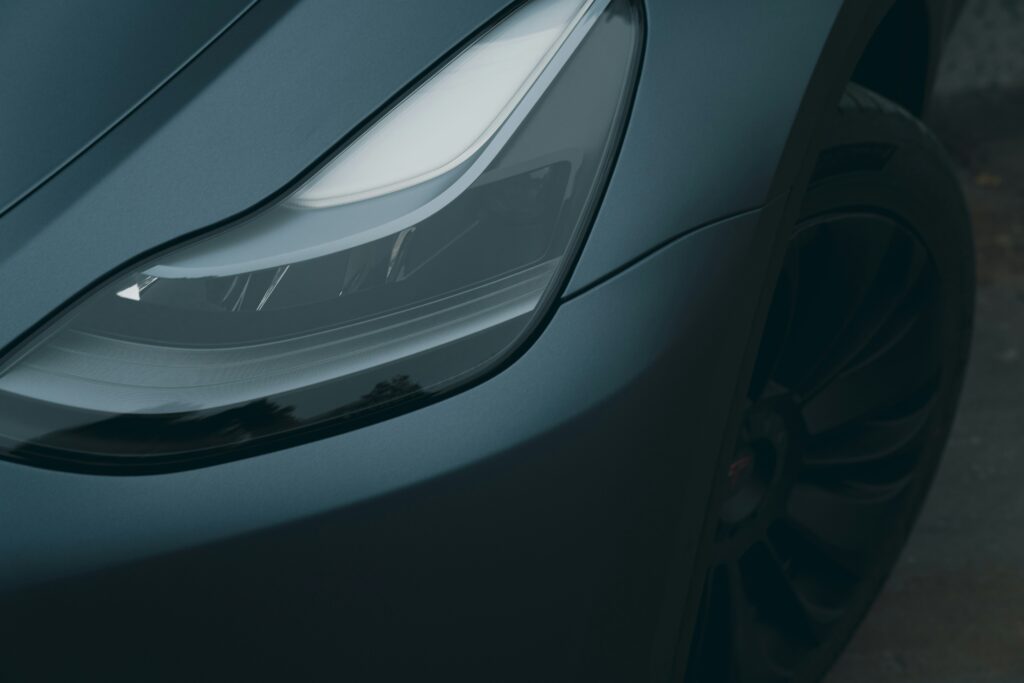Your car is one of your most important investments. Vehicles cost an average of $48,008, so protecting your vehicle’s function and pristine appearance is important. The sleek, glossy finish of your car’s paint can be worn away by the harsh realities of daily life, like gravel-strewn roads, unpredictable weather, and the occasional bird strike. Enter Paint Protection Film (PPF), a cutting-edge solution that safeguards your vehicle’s paint against the myriad hazards it faces on the open road. Let’s explore the role of PPF in protecting your investment and keeping it looking beautiful!
What is Paint Protection Film?
Paint Protection Film, also called PPF clear bra, is a transparent, polyurethane film that can be adhered to your vehicle’s painted or glass surfaces. This material protects your vehicle’s paint job and allows the finished paint to shine without distortion. Several protective layers comprise PPF. Each layer prevents the brunt impact of road debris and other environmental matter.
The primary purpose of Paint Protection Film is to shield your vehicle’s paint from external threats. PPF is comprised of specially designed plastics that absorb and disperse energy from minor impacts, like rocks, thus reducing visible damage from road debris to your vehicle. Additionally, PPF is stain-resistant, preventing stains on your car from tree sap, bug splatter, or salt. PPF also protects against UV rays, which can fade your vehicle’s paint over time.
Paint Protection Film offers an extra layer of protection for your vehicle, protecting its visual and structural integrity.
Benefits of Using PPF
Using Paint Protection Film on your vehicle will provide you with numerous benefits. From protecting your car against damage to reducing the cost of repairs, Paint Protection Film is a valuable investment that promotes the longevity of your automobile.
Protection Against Rock Chips and Road Debris
The primary reason vehicle owners use Paint Protection Film is its ability to protect against damage due to road debris. No matter how new a road is, there will likely be some kind of road debris, like small rocks, sand, and salt. PPF is a barrier between your vehicle’s surface and debris, dispersing the impact and preventing minor dents and paint damage.
Resistance to Environmental Elements
Environmental elements, like weather, bugs, and UV rays, can also damage vehicle paint. PPF shields against the elements, preventing your vehicle’s surface from fading and deteriorating. PPF contains UV and chemical protection, which reduces the likelihood of damage to your car’s pristine paint job.
Preservation of the Vehicle’s Resale Value
You may wish to sell your vehicle down the road, so it is essential to consider your car’s long-term value. The average new vehicle loses half its value in the first five years, and those with damage lose even more. By preserving your vehicle’s visible paint, PPF can significantly enhance the resale value of your car, as buyers often look for vehicles with minimal wear and tear.
Enhancing the Aesthetic Appeal of the Car
Beyond its protective qualities, PPF contributes to the overall aesthetic appeal of your car. Traditional paint protection methods can be bulky and cumbersome, ultimately covering up your vehicle’s glossy finish. When properly installed, PPF is nearly invisible. This thin protective layer allows the vehicle’s original color and finish to shine through.
Whether you drive a high-end sports car or a family-friendly minivan, Paint Protection Film offers the protection your vehicle needs.
Installation Process
Paint Protection Film is typically installed by trained technicians who use specialized tools to custom-fit the film to each vehicle. The process starts with thoroughly cleaning your vehicle’s surface, ensuring it is free of debris, water spots, and other imperfections. During this process, technicians may address any defects to your vehicle’s paint, like chips or dents, to ensure a smooth surface to apply the film.
Next, the PPF is cut to fit the exact specifications of your vehicle. This step typically uses a pre-programmed computer program with the car’s details. The film is then applied to the vehicle using a smoothing technique that eliminates air bubbles and creates a seal with the paint. PPF technicians use squeegees and heat guns to manipulate the film for a perfect fit. Finally, the excess film is trimmed and sealed to the vehicle, creating a near-invisible protective coating.
PPF Care and Maintenance
Though PPF is designed to withstand various environmental elements, some cleaning measures can lead to damage. Avoid pressure washing your vehicle, as this can cause warping and potentially lift the edges of the wrap. Instead, regularly clean your vehicle with a non-abrasive car soap and a soft microfiber mitt. This keeps your car shining and ensures the PPF can do its job. A professional should periodically inspect the Paint Protection Film to address any lifting or bubbling. These inspections make sure that the film continues to provide optimal protection.
Call Wraptitude Today!
Ultimately, Paint Protection Film guards against wear and tear and keeps your vehicle looking newer for longer. Protect your vehicle with Wraptitude’s precision PPF experts! Contact us today for a free PPF quote for your car!

